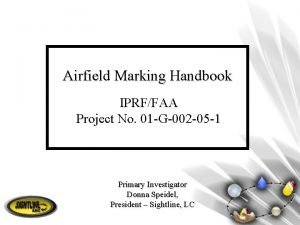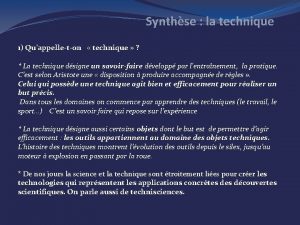Individual External Marking Technique II Individual External Marking










- Slides: 10

Individual External Marking Technique II

Individual External Marking Technique II Plastic head intra-muscular tags – Game fish tag • These are suitable for tagging large game fish that cannot easily be brought on board. • They are not suitable for tagging sharks due to the toughness of their skin.

Polyethylene Streamer Tags • Extremely popular with researchers for a wide variety of finfish and crustaceans especially shrimp, lobster and juvenile fish.

Fingerling tags • Small numbered plastic tags of different colours are attached to a thread and which is passed through the body above lateral line on upper portion of caudal peduncle or through muscle at base of dorsal fin rays and tied over the top of fish. Disc and Button tags • These are disc and button shaped tags. Petersen disc tag with wire pin • These are widely used for finfishes, crustaceans and molluscs.

Carlin Disc • These are larger numbered plastic tags of different colours with two threads and which is through the muscle at base of adjacent dorsal fin rays of the fish using a needle and make a knot on the other side of fish body to secure tags. Food-safe ruggedized RFID PIT tags • Completely embedded and encapsulated in surgical plastic, food grade resin, and acrylic and withstand extreme temperature, pressure and shock. • These tags are compatible with most RFID scanners. • They bond quickly with tissue and do not need additional coatings to prevent the migration of tag in fishes. • They are red in color for easier visibility and retrieval upon recapture.

Information to be printed on tags • • • Organization Name Organization Address Phone Number Reward Announcement Other Information Tag Number

Release information • • Species Location of tag release Date of tag release Length Weight Biological Sample (scales, otoliths) Other Information

Recapture information • • • Species Location of tag recapture Date of tag return Length Weight Biological Sample (scales, otoliths) Recapture gear Disposition (harvested, re-released) Other Information

Tagging programme contact information • • • Program Name Contact Person Organisation Telephone Number E-mail Street Address City/State/Zip/Postal Code Fax Number Web Site

Necessary qualities of a tag • Durable; high retention rate; small; visible; cheap; easily available; should not affect the movement and behaviour of the fish; harmless to fish.



















